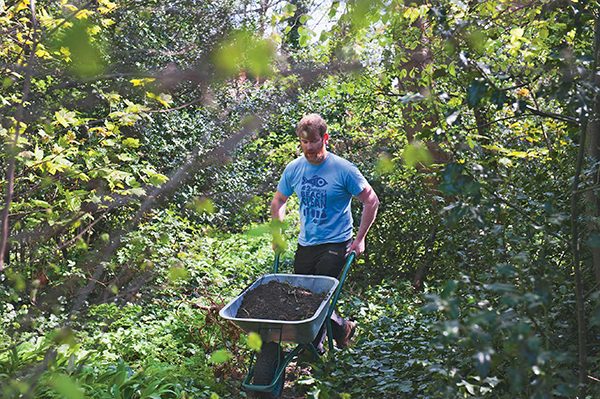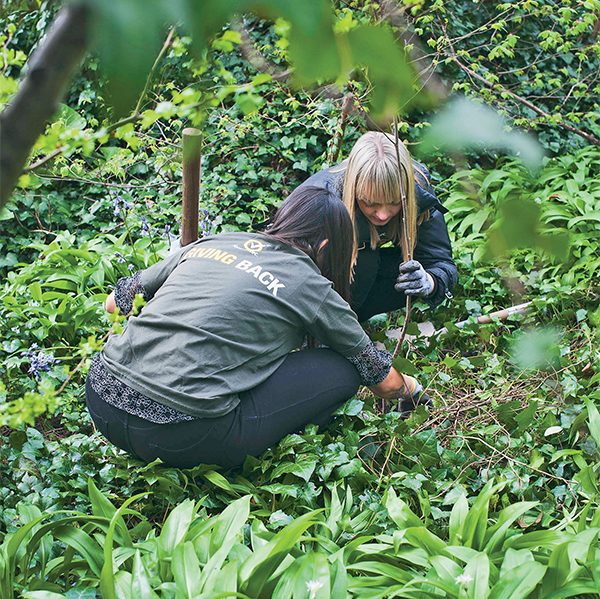
Pictured: Fintan O’Kelly An-Taisce conservationist.
A little-known secret haven in Donnybrook can be easily missed. Nestled into the corner of Morehampton Road and Wellington Place, The Grove Wildlife Sanctuary is free to any person to enjoy on specific dates with the permission of An Taisce, which are announced through local and social media.
It remains to many Dubliners a lesser-known fact, an unknown green space in the midst of the urban sprawl.
The Grove Wildlife Sanctuary in Donnybrook is a microcosm of natural Irish woodland, tended to and maintained by An Taisce and supported by Dublin County Council. There have been four educational events, including a bio-blitz – a count of the flora and fauna found there – which took place on August 28th.
Fintan O’Kelly is a conservation officer with An Taisce and has formerly worked with the Irish Wildlife Trust on the conservation of bat species and construction of bat boxes. He is currently in charge of An Taisce’s project for the development and transformation of the sanctuary.
“Our vision for the property is that it will be a safe haven for wildlife and a space where children and adults can learn about nature. Ongoing work will therefore involve improving the value of the site for biodiversity and hosting educational events,” says O’Kelly.
With the help of local volunteers, the team have expanded the site’s little pond. Having dug a new expanse of sand and clay and having filled it with water, O’Kelly now plans to have the pond surrounded by aquatic plants to attract wildlife. Dublin City Council have funded the construction of the pond, but all the labour and elbow grease have been provided by the team and the local community.
“By creating a pond we will provide a source of water for the resident animals. It will also attract freshwater insects and allow the small frog population in the property to stretch their legs,” adds O’Kelly.
The Grove itself supports a variety of wildlife including Ireland’s largest bat species, the Leisler bat, with sparrowhawks also having been spotted roosting there and with an active den for the resident foxes.
Frogs too have been known to spawn in the little pond and the team hope to introduce newts and are confident that Great Diving Beetles will eventually breed there naturally.
O’Kelly and the An Taisce team have built bird boxes and bat boxes to encourage wildlife to flourish.

An-Taisce team members busy at work.
Photos: Dora Kazmienak.
Over 28 native trees and shrubs have been planted over the past year, including sessile and common oak, hazel, lime and chestnut. In the future, the team hope to encourage the growth of natural Irish flora such as primroses, bluebells, foxglove and wild garlic.
“Ongoing work will therefore involve improving the value of the site for biodiversity and hosting educational events. Some of the work we have done to date has involved removing invasive species such as laurel which out-compete native plants. These native plants are valuable elements of biodiversity in their own right but they also form the foundation of the food web. Insects can’t live there and therefore neither can wildlife which eat the insects. By removing invasive species and reintroducing native flowers, shrubs and trees we are reconstructing a healthy Irish woodland,” says O’Kelly.
“The major conservation issue within the property moving forward is the invasive winter heliotroph which has carpeted much of the southern half of the property. It out-competes with the native ground flora and so over time creates a monoculture which is never good for biodiversity.”
This regeneration and development of the site will take over a year to complete. It is an on-going process that will in time be used as symbol for urban biodiversity.
By Robert Fullarton



